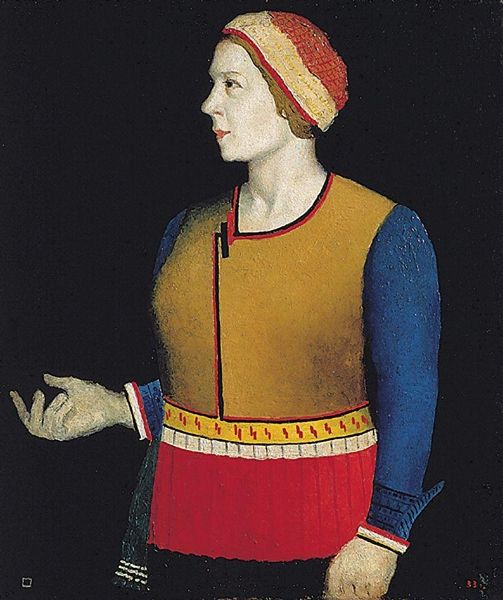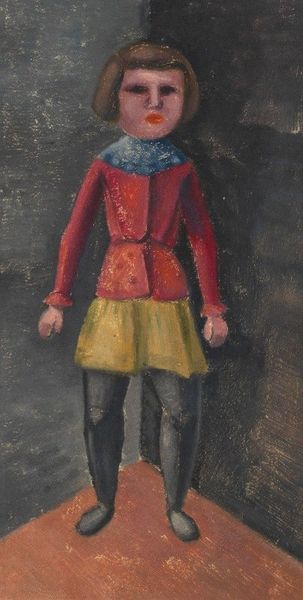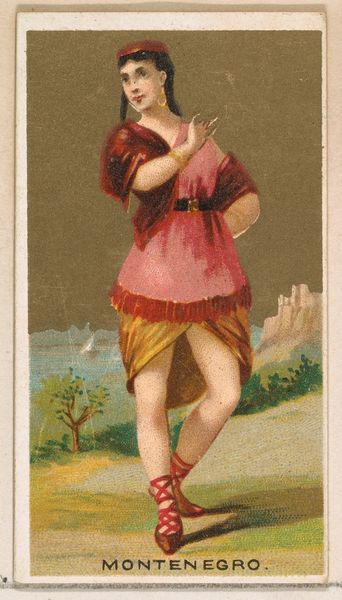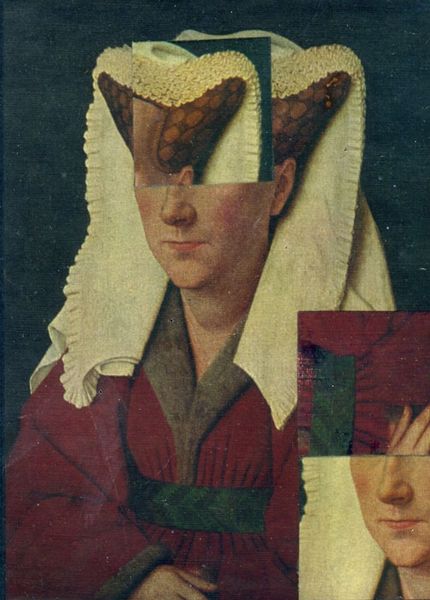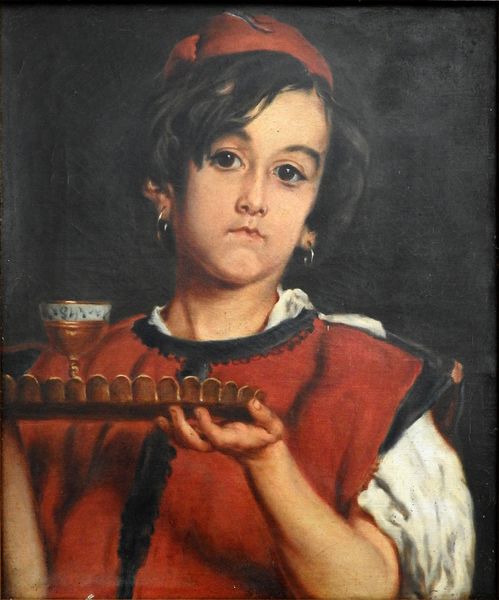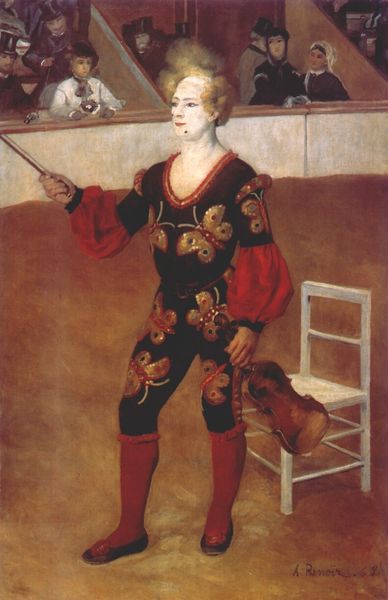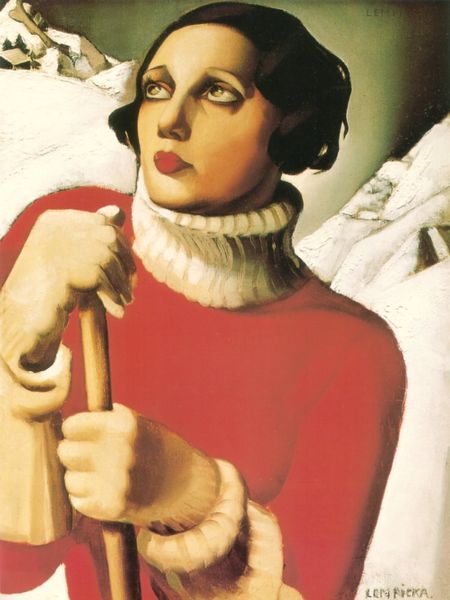
painting, oil-paint
#
portrait
#
portrait
#
painting
#
oil-paint
#
soviet-nonconformist-art
#
social-realism
#
realism
Dimensions: 71 x 60 cm
Copyright: Public domain
Curator: Kazimir Malevich painted "Worker" in 1933. It's an oil painting, showcasing a figure in what appears to be working attire, set against a stark, black background. Editor: It’s funny, I’m immediately struck by the colors; such vivid hues. And her hands! They look enormous but delicate, like she could build a house, or… well, you know, cradle a bird. Curator: The clothing is certainly deliberate: a bright red vest, yellow skirt or apron. Those bands of color – yellow, white, blue and red – framing the neck and sleeves hint at symbolic choices, though direct interpretations can be tricky. What is undeniable is that this figure emerges directly from social-realism and constructivism—with an intriguing modern twist from the artist. Editor: True! The social-realism comes through, definitely a deliberate statement for its time. Yet, those colors almost feel Fauvist. A celebration, maybe, even in what might appear like mandated subject matter. I also get the distinct feeling that while portraying "the worker," Malevich also shows us an individual. See how the brushstrokes seem almost pointillist in texture? It stops it being strictly social realist somehow, or maybe subverts it. Curator: I agree. Looking closer, we can discern so much labor and consideration embedded in the textures of those garments. How fascinating that what might be first viewed as "social realism" includes the artist's consideration for brushwork, pigment, and ultimately the art object itself. A subversive, even transgressive move given the social and political climate during Stalinism, perhaps? Editor: Perhaps it IS more than 'perhaps'! The somber background against those joyful pops of primary hues... to me it's almost as though it shouts defiance quietly. And the hands... again, look at the work captured within, like a frozen story, if you like. This 'worker' is full of the labor required of the soviet agenda while radiating individual will. Fascinating. It makes you think, doesn’t it? Curator: Indeed. Malevich manages to imbue an ostensibly state-sanctioned theme with an intense level of individual expression, which makes it infinitely more complex when we consider its history and context. Editor: A real triumph—layer upon layer revealing something utterly timeless within something very, very specific to one historical moment.
Comments
No comments
Be the first to comment and join the conversation on the ultimate creative platform.
